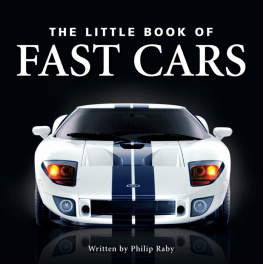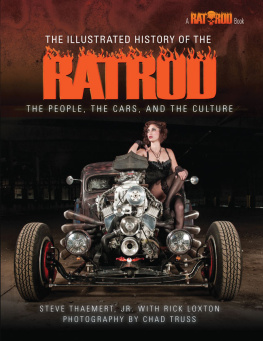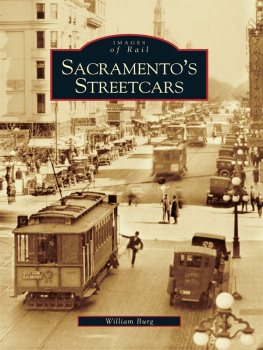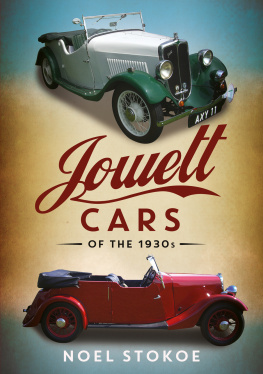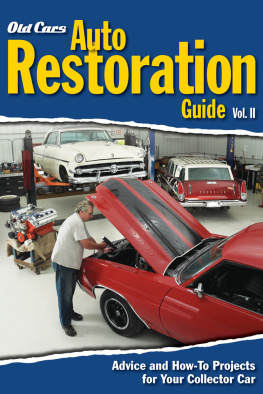


Published by The History Press
Charleston, SC
www.historypress.com
Copyright 2019 by John V. Callahan
All rights reserved
First published 2019
E-Book edition 2019
ISBN 978.1.43966.606.7
Library of Congress Control Number: 2018960965
Print edition ISBN 978.1.46713.995.3
Notice: The information in this book is true and complete to the best of our knowledge. It is offered without guarantee on the part of the author or The History Press. The author and The History Press disclaim all liability in connection with the use of this book.
All rights reserved. No part of this book may be reproduced or transmitted in any form whatsoever without prior written permission from the publisher except in the case of brief quotations embodied in critical articles and reviews.
THIS BOOK IS DEDICATED to Lenny Byer (19332010). Lenny was a customizer of cars and hot rods who was as good as any in that field and became famous. He invented his creation of a custom lacquer paint formula called Candy Apple Red. The paint was the first of its kind to have a deep, brilliant red, the color of the candy apple you bought at the carnival. Joe Bailon, the original inventor of the color, said:
There are only three painters who can paint Candy Apple Red: Joe Bailon, George Barris and Lenny Byer, the 3 Bs.
I remember visiting his shop at Bauman Motors after school, and he let me hang around. Lenny Byer was a good guy who let us watch him work and answered our curious questions. There always seemed to be someone around after school to check out what was going on. It was a great experience to see a master at work. He had some guys who worked for him that were also talented, including Doug Morden, George Amaral and Walt Schmit.
CONTENTS
ACKNOWLEDGEMENTS
I have read that writing is a lonely art. I guess that depends on who and what you are writing about. My subject is cars and people, but not ordinary cars or people. This book came about because memories arent always exactly the way we remember them. I personally know the majority of people and cars spotlighted here, and their help in clarifying many things is beyond my ability to express. Also, some published articles are included because the excellent stories told it better than I could. Each is credited before their story. The conversations Ive had with car people reveal their interest has never diminished a bit. Guys like Tom Cutino are still turning out customs at our advanced age because the interest worldwide is still growing. Television shows about car builders are popular. Just to mention a few:
Boyd Coddingtons Garage (in syndication)
Dave Kindigs Bitchin Rides
Jay Lenos Garage
Inside West Coast Customs
Chip Fooses Overhauling
Wayne Carinis Chasing Classic Cars
There are many more out there, and the number would be near impossible to count. There are major shows, but city and state shows in a local, oneor two-day smaller format are everywhere. They use entry fees to support charities in their areas. Great cars and owners who support local causes make these worthy events.
INTRODUCTION
You need to be a local and real aficionado of custom cars and hot rods to know who some of the people mentioned in this book are. Back in the 1950s, hot rod building and street racing were widespread and mostly illegal, sort of the Wild West phase of their history. The Delta is as flat as a pancake, with roads elevated a bit to keep the farms from the river. The roads are dangerous, twisting every which way. Teenagers were pretty much sequestered at home unless they had drivers licenses. Farm kids could get an early drivers license if they could qualify for one. The school bus was their major means of transportation, commuting to and from school. A car became a necessity just to survive, and regardless what kind of car a teenage boy got, he wanted to fix it up. Many learned their automotive skills welding and fixing farm equipment. Harvesters and other machinery needed to run and get fixed immediately, or crops could fail. But these teenagers didnt want Dads truck to drive to school, they wanted their own cars fixed up their own ways. Hot rodding in the early days had a bad name, street racing was out of control and the publicity that came with it was bad. Fortunately, many cars were available if you could keep them running, but that wasnt good enough. It had to be your car, changed to what you wantedand what you wanted would be different than anyone elses. There was another added benefit: meeting girls! If you had a cool car, you could cruise around town, maybe go to Sacramento or Stockton. There were numerous hangouts like the A&W drive-in, Bobs or Grannys drive-ins in Rio Vista and other towns. These were pretty much the local hangouts, and out-of-town places were at least an hour away along levee roads. Thanks to the California Highway Patrol (CHP) and other sources, organized car clubs and positive publicity, attitudes changed as hot rods and custom cars gained maturity and acceptance; certain people gained respect for their contributions and the fame that went along with it. The Sacramento Delta was fortunate to have a few who fit that bill. Two notables were Harry Westergard and Rico Squalia, who both lived and worked between Isleton and Walnut Grove. They are still remembered today, Harry for his genius of metal forming and Rico for his mechanic skills. Together they made a famous hot rod. There are many others who are remembered for their cars that were family and personal transportation. They drove what they created, rolling art, unfinished in many cases, but loved as their own. When we talk about someone whose name we cant remember, a description of his car identified him immediatelyits a rolling ID card.
THE HOT ROD CRAZE
A hot rod craze was sweeping the nation in the years after World War II, and California was the place to be if cars were your passion. Los Angeles and the Pacific Coast Highway drew most of the attention from the newspapers and magazine articlesin some ways, negative publicity. Wild teenagers in motion pictures like The Wild One, Hot Rod Girl, Hot Rods to Hell, The Wild Ride and Hot Rod Rumble represented Hollywood cashing in on the growing culture. Even Elvis Presley, in Loving You, drove a black open-wheeled Ford Model A hot rod with a flathead engine and dual carbs. Looking back, its not hard to understand our elders reaction to hot rods when they saw the films and read reviews in the papers of illegal street racing. Locally, cars were racing around the narrow Delta two-lane roads, which were dangerous under normal traffic. Out of the bad publicity and public view came the effort to bring legitimacy to the culture. The kids interested in cars formed car clubs to try to get their parents approval and do some good deeds in the community. They were helped along the way by the California Highway Patrol. The following article appeared in the Wednesday, February 24, 1960, issue of the River News Herald:
Hot Rodders Termed among the Best Drivers by Authority
The public owes Hot Rodders an apology and a debt of gratitude, so says Wally Parks, president of the National Hot Rod Association, who is editor of Hot Rod Magazine. Hot Rodder is generally associated by the public with any teenager who drives recklessly, but according to Parks most true hot rodders might give the average driver a lesson in good driving. In a true sense of the word, Hot Rodder applies to any youth who is a member of a car club. Most of these clubs are either a member or modeled after a club that belongs to the NHRA. All members are required to pay half the amount of any fine received for a traffic violation to their club and may be expelled. These clubs are made up of youths who are interested in cars, not only for speed but for safety and mechanical perfection and unique styling as well. Most Hot Rodders are interested in racing their cars, but in the majority of their racing activity are confined to authorized and supervised drag strips. It is the youths who do not belong to such clubs that give young drivers a bad name. To quote Johnnie Parsons, veteran racing driver, and holder of two championships: Hot Rodders and sports car enthusiasts are the safest drivers on the road today. They know more about driving, take better care of their cars and more consideration for other drivers than the average person behind the wheel today.
Next page

